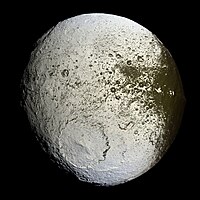
Photo from wikipedia
Abstract This paper considers wave impacts on baffles, on baffles or decks adjacent to a vertical wall, and on porous seawalls and/or sea beds. For seawalls and vertical baffles, impacts… Click to show full abstract
Abstract This paper considers wave impacts on baffles, on baffles or decks adjacent to a vertical wall, and on porous seawalls and/or sea beds. For seawalls and vertical baffles, impacts can occur in steep waves, whilst a deck can be struck from below by a rising wave crest either in open sea or in a tank with standing waves (sloshing). A simple analytical model for the pressure impulse, P, due to a wave of idealized geometry and dynamics is developed and applied to the following geometries with impermeable surfaces: • horizontal wave impact onto a vertical wall with a deck at the waterline, • vertical wave impact under a deck in the same configuration (equivalent to vertical water impact of a horizontal plate), • horizontal wave impact onto a surface-piercing vertical baffle in open sea, • as for 3. but with the baffle in front of a wall, • as for 4. but with a deck extending from the vertical wall to the baffle, • bottom-mounted baffle in front of a wall with impact occurring on the wall. We also consider cases that complement part 1 of this paper to include the effect on impacts on a seawall with a porous sea bed and/or sea wall with/without a berm. Finally we reconsider case 3) above but with a porous baffle. The method uses eigenfunction expansions in each of the rectangular regions that satisfy some of the impermeable or porous surface conditions, and a simplified free-surface condition. Their unknown coefficients are determined from the impact boundary condition, impermeable or porous boundary conditions and by matching the solutions, in any two neighbouring rectangles, along their common boundary. Although the fluid motion is treated rather crudely, the method yields the pressure impulse throughout the entire region. Impulses, I, and moment impulses, M, on all or parts of the structure are also presented.
Journal Title: Applied Ocean Research
Year Published: 2019
Link to full text (if available)
Share on Social Media: Sign Up to like & get
recommendations!